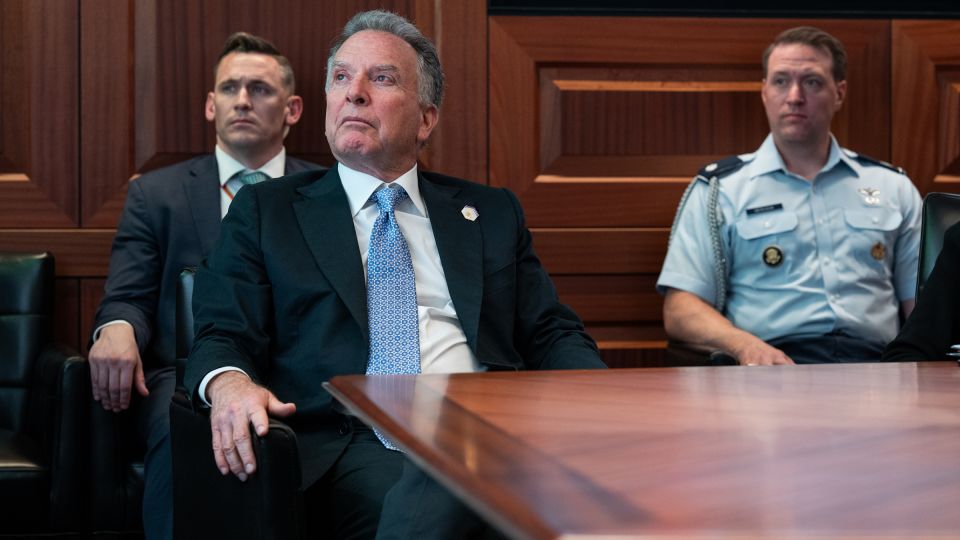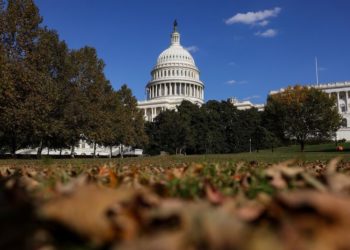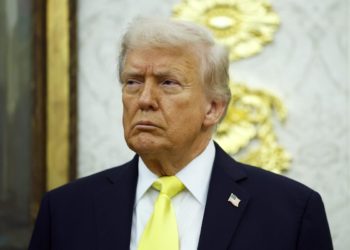As the Trump administration looks to quickly pivot from military strikes to a diplomatic deal on Iran’s nuclear program, the final military and intelligence assessment on the recent US strikes will be critical in informing what the Trump administration needs to accomplish in future Iran negotiations.
Trump’s special envoy Steve Witkoff will need to use that final battle damage assessment – including a detailed summary of the facilities’ damage and the locale of the nuclear material – to help formulate the US strategy for diplomatic efforts to completely halt the regime’s ability to develop a nuclear weapon in the future, current and former US officials explained.
“You’re not going to the negotiation assuming that the other side is going to tell you everything you need to know about the state of their program,” explained Pranay Vaddi, a former senior official for nonproliferation at the National Security Council.
“We need to have a baseline that is established by the US intelligence community before that,” Vaddi added. “If the Trump administration is committed to some kind of deal still – which it makes statements on – they need to know what they were able to get through military action, compared to what they need to get through the diplomatic process.”
President Donald Trump continues to claim that Iran’s nuclear program has been “fully obliterated,” which does not mirror an early assessment from the Defense Intelligence Agency, finding that the attack did not destroy the core components of the country’s nuclear program. The early assessment has split lawmakers on the effectiveness of the strikes. And Trump’s absolutist pronouncements could also complicate Witkoff’s job, officials said.
Even if the facilities themselves have been badly damaged, it does not mean that the nuclear program itself has been wholly destroyed. Prior to the US strikes, experts and former officials had expressed skepticism about the idea that the nuclear program could be militarily destroyed, noting that there would still be people with the knowledge to support it.
“The basic problem is that the equivalency between the success of the bombing and the success of ending the nuclear program is putting pressure on having this narrative that there isn’t a threat,” said Beth Sanner, former deputy director for national intelligence. “If you think that you’ve eliminated the nuclear program then you are not dealing with the fact that there is some residual of that program.”
The critical role of the IAEA
And while the final battle damage assessment will be important to take into account, future negotiations with Iran should prioritize getting the UN’s nuclear watchdog back on the ground in Iran, said former officials who worked on previous Iran negotiations.
“I don’t know that there will be any assessment that I think is fully viable until there are inspectors on the ground,” said a former senior US official who worked on past Iran negotiations. “We must recreate the kind of intrusive verification and monitoring that was in the 2015 deal.”
The International Atomic Energy Agency (IAEA) had a presence in Iran before the 2015 nuclear deal signed during the Obama administration – a deal which Trump pulled the US out of during his first term – but the presence of IAEA inspectors in the country drastically increased as a result of that deal.
“The deal meant there were inspectors on the ground 24/7, there was electronic monitoring, there was a process by which – that didn’t exist anywhere else in the world – that if there was intelligence about a suspected site, if Iran, over a period of some days, couldn’t satisfy the IAEA that there was a reason the IAEA could go and inspect,” the official explained, citing some benefits of the IAEA inspection efforts.
But this week the Iranian parliament this week suspended its work with the IAEA, because of the “regrettable role” played by the agency’s chief Rafael Grossi, Iran’s foreign minister said. Iran accused Grossi of facilitating the US and Israeli strikes in Iran, citing an IAEA report a day prior to the Israeli strike, which declared Iran was violating its nuclear non-proliferation obligations.
This move follows years of Iran making moves to restrict the agency’s oversight of it’s program. For example, in 2022 Iran responded by removing surveillance cameras from key sites after IAEA censured Iran over uranium particles found at the undeclared sites.
The steps that would need to be taken as part of any verifiable deal on Iran’s nuclear program would likely include: destroying elements of the program that still exist, monitoring any further activity, blending highly enriched uranium, and declaring parts of the program that are in use.
In order to prepare to take those steps, inspectors on the ground would be essential, former officials pressed.
“I think it’s been a long time since the US intelligence assessments have been accepted globally as authoritative when it comes to Iran’s nuclear program. They would certainly be challenged by Iran. In order to have a successful negotiation everybody needs to at least agree on the source of facts,” said Laura Holgate, the former US Ambassador to the United Nations International Organizations in Vienna.
“The IAEA will be needed to develop a new baseline of what exactly Iran has, where it is, and what its condition is in, and that’s going to take time, and it will be based on Iran’s cooperation,” Holgate added.
With the IAEA access being diminished over the years and virtually nonexistent at this moment, the world now has large gaps in its knowledge of Iran’s nuclear inventory. That is particularly true when it comes to the locale of Iran’s enriched uranium.
Trump administration officials have said in recent days that the stockpile was not moved ahead of the US strikes but the IAEA said Iran may have moved some of the enriched uranium out of the sites before they were attacked. Vice President JD Vance said the day after the strikes that working on what to do about that fuel would be a priority for the US.
“We’re going to work in the coming weeks to ensure that we do something with that fuel. And that’s one of the things that we’re going to have conversations with the Iranians about,” Vance said.
Republican Rep. Michael McCaul, a member of the House Foreign Affairs Committee, cited the importance of having “a full accounting” following an all-member classified briefing on Capitol Hill earlier this week.
“There is enriched uranium in the facilities that moves around, but that was not the intent or the mission,” McCaul said. “We need a full accounting. That’s why Iran has to come to the table directly with us, so the IAEA can account for every ounce of enriched uranium that’s there, I don’t think it’s going out of the country, I think it’s at the facilities.”
Complete assessment likely weeks away
The final US military “battle damage assessment could take days or even weeks to complete,” multiple sources familiar with the Pentagon’s process told CNN. CIA Director John Ratcliffe on Wednesday said the agency underscored that a broad intelligence community effort is ongoing to determine the impact of the US strikes on three of the country’s nuclear sites on Saturday.
The Trump administration was already working on possible terms to offer Iran to bring them back to the able for nuclear deal talks before the US military strikes occurred. But if they are able to pull Iran back to the table, they will have to then enter into much more technical talks to put a legitimate and verifiable deal into place.
“I think that you want to strike while the iron is hot, to try and get them to the table while they’re feeling weak,” Sanner said. “One of the key requirements for the negotiation is setting mechanisms for cataloging Iran’s residual capabilities in order to have that conversation and ultimately a deal that is worth the paper it is written on.”
For more CNN news and newsletters create an account at CNN.com
The post Final battle damage assessment of US strikes on Iran will be key in US push for Iran nuclear deal appeared first on CNN.




